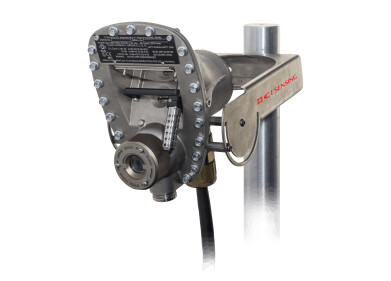Air Monitoring
Air Quality in Beijing Sees Improvement in 2015, Says Report
Jan 10 2016
Despite issuing its first ever red alert for smog in December, it appears that air pollution levels in Beijing fell throughout 2015 on the whole, according to Chinese environmental authorities. Indeed, it may well be because of China’s new-found willingness to issue such alerts and take the appropriate measures to curb air pollution that levels fell.
It is this willingness to acknowledge the problem and take evasive action without the fear of disrupting people’s lives which has helped China take the first steps in addressing its terrible air quality issues.
A History of Pollution
China has long been renowned as one of the most polluted countries in the world, regularly scoring high in the list of cities with the worst air quality. Beijing, as the country’s capital, has been top of that list for some time – although in recent years, Indian cities have usurped China’s place at the top of the pollution tree.
This is in part due to India’s booming production lines, pursuit of fossil fuel-based energy sources to meet its rising population and lack of prudence when it comes to curbing emissions. However, China’s role in improving air quality in the nation should not be ignored. The country has entered something of a new era in air monitoring, beginning in 2013 when it published the first figures on particulate matter 2.5 (PM2.5), the harmful micro-contaminant which can infiltrate the bloodstream and cause serious health complications.
In 2013, the average concentrations levels of PM2.5 in the Chinese capital were around 90 micrograms per cubic metre. This year, they had fallen by roughly 10% to 81 micrograms per cubic metre. Although that figure is still almost three times the national average of 35 and eight times higher than the recommended ‘safe’ level outlined by the World Health Organisation (WHO) of 10, it does represent a clear step in the right direction.
Looking to the Future
Chinese attempts to address their air pollution problems have been manifold – in fact, the Asian superpower has spent more money and resources on combating climate change and curbing carbon emissions than any other nation in the world over recent years.
The measures taken have included shutting down or relocating factories and plants with large emissions, replacing coal-fired heating systems with natural gas ones where possible and forcing antiquated vehicles which emit high levels of carbon off the road. In addition to this, the red alerts of last month forced half of Beijing’s cars off the road by only allowing odd- and even-numbered license plates to drive on alternate days. Some sections of industry were also shut down until the serious pollution levels abated, and the threshold for the calling of this alert was also dropped from an air quality index (AQI) reading of 300 to 200.
The results are there for all to see. As well as falling levels of PM2.5, nitrogen dioxide (NO 2) also fell by 12% and sulphur dioxide (SO 2) by 38%. Hopefully, China will be able to build upon this platform of early success and continue addressing its pollution problem in the future.
Digital Edition
AET 28.2 April/May 2024
May 2024
Business News - Teledyne Marine expands with the acquisition of Valeport - Signal partners with gas analysis experts in Korea Air Monitoring - Continuous Fine Particulate Emission Monitor...
View all digital editions
Events
Jul 10 2024 Birmingham, UK
Jul 21 2024 Cape Town, South Africa
Australasian Waste & Recycling Expo
Jul 24 2024 Sydney, Australia
Jul 30 2024 Jakarta, Indonesia
China Energy Summit & Exhibition
Jul 31 2024 Beijing, China


















